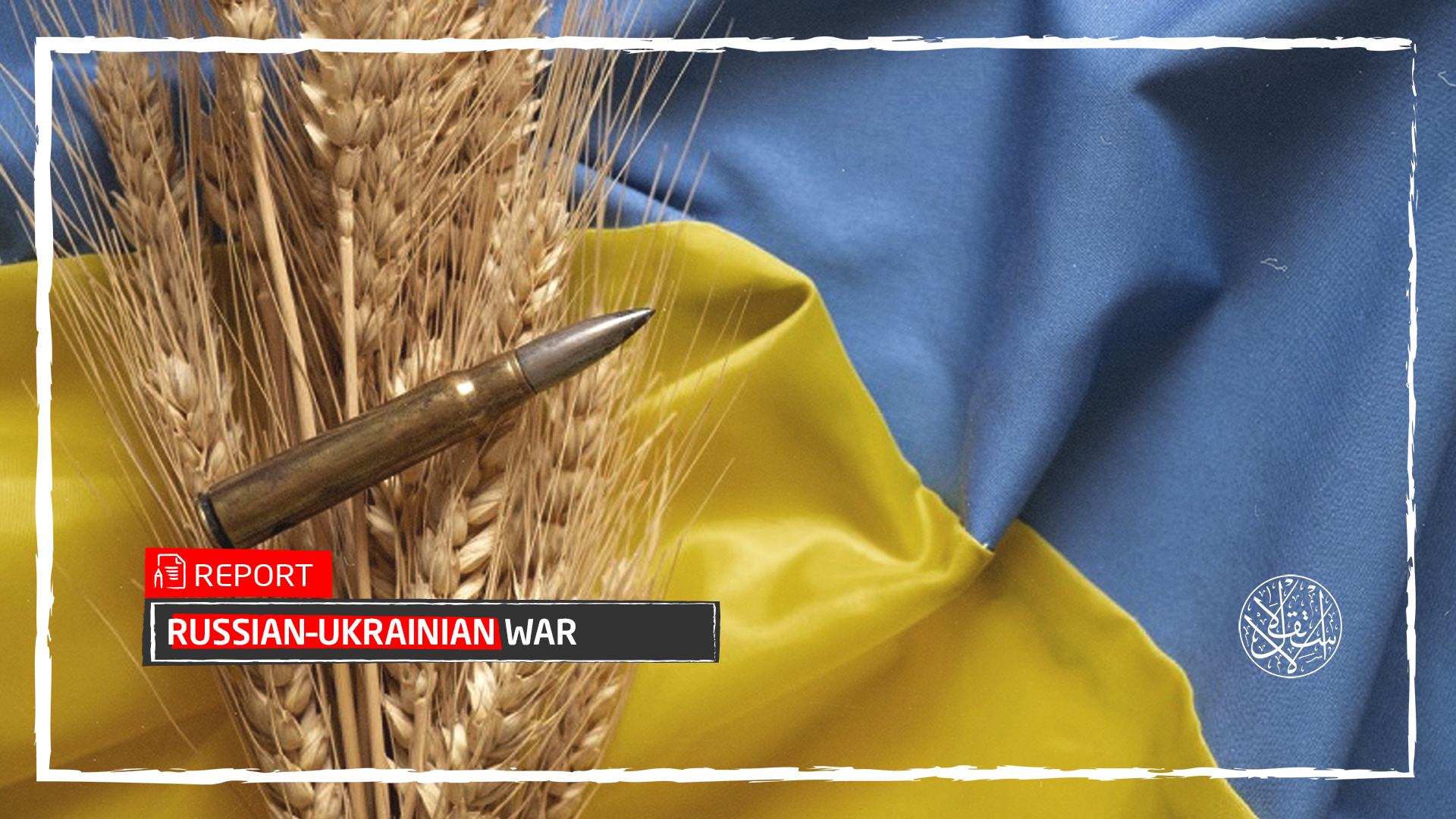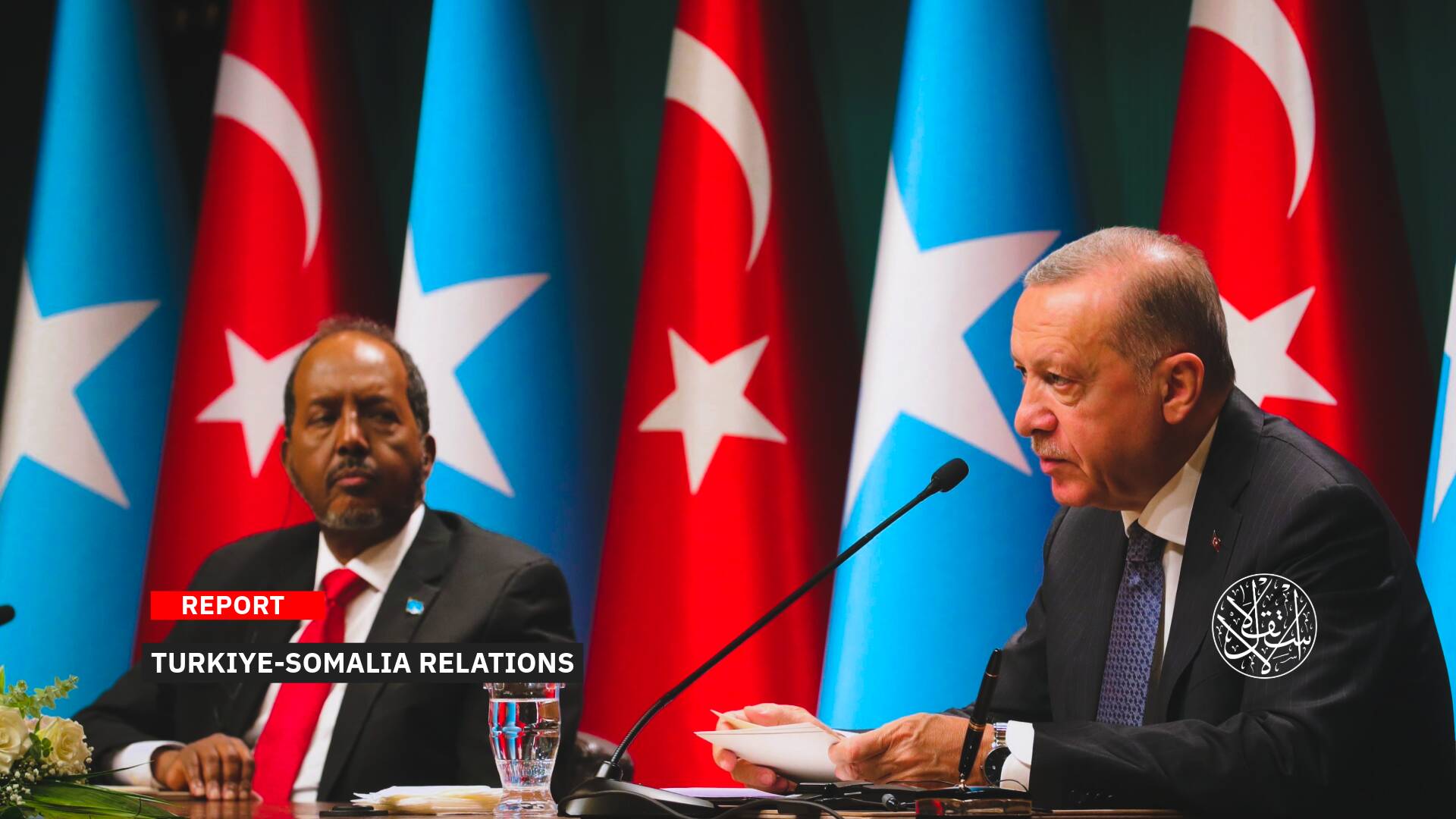Ukrainian Grain: This Is How Putin Stole It, Assad Stored It, and Satellites Exposed All

Stealing Ukrainian grain was the first war tactic adopted by Russia in its invasion of Ukraine, which Kyiv documented after providing evidence of Moscow’s transfer of wheat shipments to the Syrian ports.
Since the beginning of the war on February 24, 2022, Kyiv has monitored grain looting.
Systematic Stealing
Kyiv collected the testimonies of the farms’ owners in the occupied Ukrainian territories and used satellite data to detect the movements of trucks to the ports run by Moscow, in addition to the departing ships carrying stolen grain.
Syria, led by President Bashar al-Assad, Russia’s first ally in the Middle East, was one of the most prominent destinations for Moscow storing stolen wheat for future “strategic purposes.”
This is due to Russia’s dominance of the Syrian port of Tartus on the Mediterranean entirely since 2017 and part of the port of Latakia after the January 17, 2022 agreement with Iran, which it has been supervising since 2019.
According to Reuters, Syria sharply increased wheat imports this year from the Ukrainian Crimean peninsula overlooking the Black Sea, which Russia annexed in 2014.
Grain sent to Syria from the Black Sea port of Sevastopol in Crimea increased 17-fold in 2022, to just over 500,000 tons, according to previously unreported shipping data, making up nearly a third of the country’s total imports of wheat.

Russia and Syria are increasingly relying on their ships to transport grain, including three Syrian vessels that are subject to sanctions imposed by Washington.
The new Reuters information came to prove what The New York Times published on June 6, 2022.
The report revealed that the Ukrainian government had accused Russia of stealing up to 500,000 tons of Ukrainian grain, worth $100 million, since the Russian invasion.
Ukrainian officials say much of the grain has been trucked to ports in Crimea and then transferred to ships, including some under Western sanctions.
Backdoor
The first reports of stealing the Ukrainian grain appeared in mid-March 2022, and since then, commentators on Russian state television stations have openly bragged about the seizure, saying that Russia won’t stop.
Taras Visotsky, Ukraine’s deputy minister of agriculture, said the Russians also stole agricultural machinery worth an estimated $15-20 million.
Most of the stolen grain ends up, according to Ukrainian officials, at ports such as Sevastopol in Crimea.
Therefore, Russia was keen to make Syria its back gate for the accumulation of stolen grain, given its extensive influence on the Mediterranean coast through the Russian naval base of Tartus, which Moscow rented from the Syrian regime for 49 years.
The port of Tartus is the largest in Syria, possessing the technical features to be among the developed ports.
It currently occupies an area of 3 million square meters, including 1.2 million square meters of water basins and 1.8 million square meters of squares, warehouses, and sidewalks, which meet the needs of investment operations.

The agreement allows the existence of 11 warships, including nuclear ones, for a period of 49 years, with the possibility of automatic renewal (25 years).
The document stipulates that the Syrian regime will hand over lands and waters in the Tartus port area to Russia for free use throughout the duration of the agreement, in addition to real estate that has not been officially announced.
In August 2022, the administration established by Russia in Crimea claimed that 1.4 million tons of wheat had been harvested from the fields there, but Ukraine disputed these figures, saying that the region does not produce much.
Before the invasion of Ukraine, the Syrian regime was importing grain from Crimea, but as of the end of November 2022, it imported about 501,800 tons of wheat from Sevastopol, up from about 28,200 tons in 2021.
Shipments were received from May 2022 onwards, with the largest monthly shipment of 78,600 tons in October, according to data compiled from port inspection reports submitted by port operators.
Proactive Move
It is noteworthy that Russia took a preemptive step in this regard as part of the strategic vision of “grain stealing” prepared before the invasion of Ukraine.
Moscow sponsored the signing of the Republic of Crimea, new cooperation agreements on ports with the Syrian regime on January 17, 2022.
At that time, these agreements included a memorandum of cooperation between the ports of Crimea and the Syrian port of Latakia, following a meeting of an economic delegation headed by a minister in the Syrian regime, Mohammad Samer al-Khalil, with the President of the Republic of Crimea, Sergey Aksyonov.
On the sidelines of the agreements, Crimean Deputy Prime Minister Georgiy Muradov said that the peninsula’s ports could become Russia’s main southern sea gate in the context of developing trade and economic relations with Syria.
He added that the island’s ports are open and ready to supply Russian products to Syria without fear of any sanctions.

Laodicea is one of three ships owned by the Syrian Ports Authority, which Ukraine says were transporting grain looted from stores on Ukrainian territory. The United States has imposed sanctions on the three ships since 2015.
There is also the FINIKIA, one of three ships owned by Syria Mar, the Syrian regime’s state-owned shipping agency.
That company has been placed on the blacklist of US sanctions imposed by the Treasury Department on anyone linked to Bashar al-Assad’s regime and its forces, according to the Maritime Executive website.
On May 18, 2022, Kyiv confirmed that the ship belongs to a small shipping company with a limited fleet and that it is loaded with a static load of about 19,000 tons.
In June 2022, the Ukrainian embassy in Beirut said that Russia had sent its ally, Syria, an estimated 100,000 tons of grain, stolen from Ukraine by the MV Matros Pozynich ship flying the Russian flag, and docked in the main seaport of Latakia in Syria in late May.
Data from the Refinitiv company, one of the largest providers of financial market and infrastructure data in the world, showed that the wheat was loaded into the ship in the port of Sevastopol in Crimea, as the ship left on May 19, 2022, and the unloading site was in Syria.
Satellite imagery from Planet Labs PBC on May 29, 2022, showed the same ship anchored in Latakia.
On May 6, 2022, the Ukrainian embassy in Beirut said that Russia had sent its ally, Syria, an estimated 100,000 tons of wheat stolen from Ukraine since its invasion of the country, describing the shipments as “criminal activity.”
The embassy stated that the shipments were carried out by the Russian-flagged MV Matros Pozynich ship, which docked in the main seaport of Latakia in Syria.
Russia previously pledged to supply the Syrian regime with one million tons of wheat, according to a bilateral agreement in 2021, and the Syrian grain imports included shipments from the Crimean peninsula.
The Minister of Economy in the government of the Syrian regime, Mohammad Samer al-Khalil, previously said that his country needs 1.5 million tons of wheat imports, with Russia providing the majority.
Partner in Crime
Hassan Khannenje, director of the Horn International Institute for Strategic Studies, a think tank in Kenya, said that in the face of such an urgent need for grain, it is unlikely that many African countries would hesitate before buying grain that Russia provides, regardless of its source, according to the New York Times.
The Ukrainian Ministry of Defense estimates that at least 400,000 tons of grain have been stolen and taken from Ukraine since the Russian invasion.
At the outset of the invasion of Ukraine, the Kremlin sought to use Europe’s dependence on Russian energy exports as a bargaining chip, trying to get European countries to pay for Russian gas in rubles to prop up the failing currency.
But the European Union did not comply and decided to cut 90 percent of Russian oil imports and two-thirds of gas imports by the end of 2022 instead.
Now, Moscow appears to be moving to use the looming global hunger crisis and global conflict caused by the loss of Russian and Ukrainian food exports to its advantage.
.jpeg)
According to an investigation published by the Associated Press and Frontline on October 3, 2022, the 138-meter (453-foot) Syrian cargo ship, LAODICEA, owned by the Syrian regime, is part of an advanced smuggling operation run by Russia.
This ship used fake data and “maritime tricks” to steal Ukrainian grain worth at least $530 million.
According to the investigation, this money helped feed the war machine of Russian President Vladimir Putin.
It also emerged that the United Shipbuilding Corporation (a Russian state-owned defense contractor) was involved in grain smuggling.
The three ships have made at least 17 voyages between Crimea and ports in Turkiye and Syria.
Oleg Nivievskyi, assistant professor and vice president for economics education at the Kyiv School of Economics, said the high demand for grain makes it easier for Russians to find buyers.
On October 3, 2022, he added that there would be no problem selling grain stolen from Ukraine at all, according to the Associated Press.
In the face of all these operations, the Syrian regime is an official partner of Russia in stealing grain and facilitating its storage in sites under Russian influence on the coasts of the Mediterranean from the side of Syria.
Sources
- Russia supplies large quantities of Crimean grain to Syria, avoiding US sanctions [Arabic]
- Russia Seeks Buyers for Plundered Ukraine Grain, U.S. Warns
- Ukraine confirms the arrival of stolen grain worth 40 million dollars to Syria [Arabic]
- Maksar: Ships flying the Russian flag transport Ukrainian grain to Syria [Arabic]











